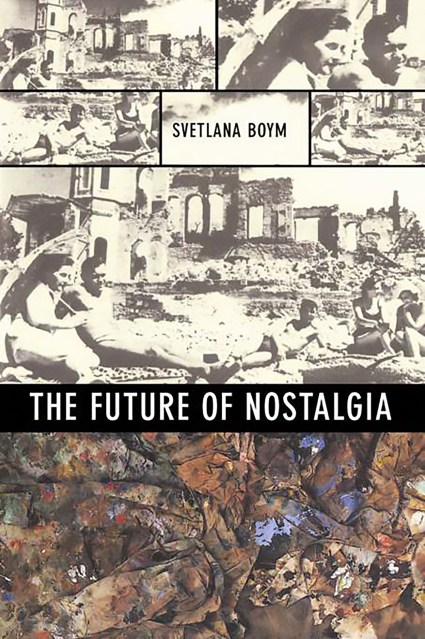Promotion
Use code BEST25 for 25% off storewide. Make sure to order by 11:59am, 12/12 for holiday delivery!
By clicking “Accept,” you agree to the use of cookies and similar technologies on your device as set forth in our Cookie Policy and our Privacy Policy. Please note that certain cookies are essential for this website to function properly and do not require user consent to be deployed.
The Future of Nostalgia
Contributors
Formats and Prices
- On Sale
- Mar 28, 2002
- Page Count
- 432 pages
- Publisher
- Basic Books
- ISBN-13
- 9780465007080
Price
$22.99Price
$29.99 CADFormat
Format:
- Trade Paperback $22.99 $29.99 CAD
- ebook $15.99 $20.99 CAD
This item is a preorder. Your payment method will be charged immediately, and the product is expected to ship on or around March 28, 2002. This date is subject to change due to shipping delays beyond our control.
Buy from Other Retailers:
“A remarkable book… brilliant.”―New York Times
Can one be nostalgic for the home one never had? Why is it that the age of globalization is accompanied by a no less global epidemic of nostalgia? Can we know what we are nostalgic for? In the seventeenth century, Swiss doctors believed that opium, leeches, and a trek through the Alps would cure nostalgia. In 1733 a Russian commander, disgusted with the debilitating homesickness rampant among his troops, buried a soldier alive as a deterrent to nostalgia.
In The Future of Nostalgia, Svetlana Boym develops a comprehensive approach to this elusive ailment. Combining personal memoir, philosophical essay, and historical analysis, Boym explores the spaces of collective nostalgia that connect national biography and personal self-fashioning in the twenty-first century.
-
“A remarkable book… brilliant.”New York Times
-
“Svetlana Boym’s The Future of Nostalgia is a massive, sophisticated and brilliant study… a rewarding cross-genre book.”Globe and Mail
-
“Erudite and witty, fact-filled and deeply-felt, this moving meditation on the vicissitudes of time, loss and longing will provoke us to think anew about the ambiguities of our collective sensibility and the perennial needs of the individual soul.”Eva Hoffman, author of Lost in Translation
-
“Svetlana Boym’s brilliant, witty, ironic, penetrating dissection of ‘nostalgia,’ in all its manifestations – nationalist, diasporic, exilic, literary, personal – is, above all, deeply moving. In casting a cool but tender eye on the contradictions of everyday existence today, this is a unique book.”Marjorie Perloff, author of The Vienna Paradox
-
“Dazzling erudition, sexy narrative drive, and an elegant aesthetic sensibility make The Future of Nostalgia a work of profound insight and intellectual excitement… an indispensable book for anyone trying to make sense of the twentieth century.”Larry Wolff, author of Inventing Eastern Europe
Newsletter Signup
By clicking ‘Sign Up,’ I acknowledge that I have read and agree to Hachette Book Group’s Privacy Policy and Terms of Use






